Things to See and Do in Germany
The Hanging Trains of Wuppertal
I don’t know about you, but whenever I visit a country – or a specific region of a country – for the first time, I don’t really feel I have been there at all until I pay a visit to the country’s (or region’s) largest town.
So when we went hiking to the Bergisches Land recently, going to Wuppertal was as much a matter of course for us as was going to LA on a trip to Southern California or going to Nice for a journey to the French Riviera.
Having said that, you would not mistake Wuppertal for LA and certainly not for Nice. The international fame that Wuppertal can lay claim to has nothing to do with architecture or natural beauty and largely rests on two things.
Firstly, there is the Suspension Railway, the hanging trains, the first and – as far as I am aware – the only one of its kind anywhere in the world. There is only one line, connecting Oberbarmen in the east (through the town centre) to Vohwinkel in the west of the city, a journey that lasts about 20 minutes.
The trip has two distinct sections: the first, and much the longer one, follows the river, through some post-industrial wasteland, past Tango Schools, offices for welfare organizations, car workshops and even the odd factory that has survived.
Wuppertal, after all, was once a mighty centre of industry and the town where Friedrich Engels, the friend, benefactor and collaborator of Karl Marx, had his factory.
No, that’s not the second thing that Wuppertal is famous for (but you deserve a bonus point if you knew that).
That would be the Pina Bausch Tanztheater, the world’s most famous modern-style artistic dance troupe – and also the subject of a film documentary made by Wim Wenders a few years ago that used Wuppertal’s post-industrial wasteland very effectively as a backdrop for some of its scenes.
Nowhere more effectively perhaps than in Sonneborner Straße, where the second section of the Suspension Railway begins: where it leaves the river to continue in between rows of houses, making Wuppertal look a little like Chicago – or Brooklyn in the French Connection.
The best way to experience the town and its Suspension Railway, the Schwebebahn, is probably to go from Oberbarmen station – which is well integrated into the national rail network and can be easily reached from most towns in West Germany – to Vohwinkel.
On your way, you can then make a note of all those stops that look interesting enough for you to explore at greater length on your way back. (If you come with one of German Rail’s discounted One Day Tickets – such as the Schöner Tag or Schönes Wochenende – the fare for the Suspension Railway is already included.)
When approaching Adlerbrücke, look out for the Opernhaus where Pina Bausch’s Tanztheater is domiciled. And to explore the town centre, descend at the station Alter Markt. Just don’t expect it to look like Nice.

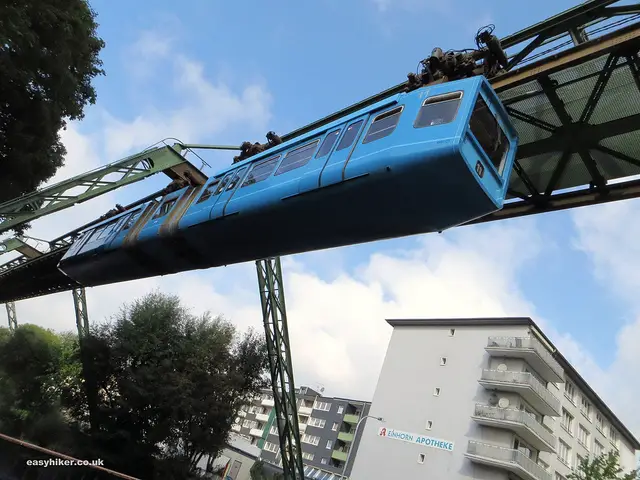

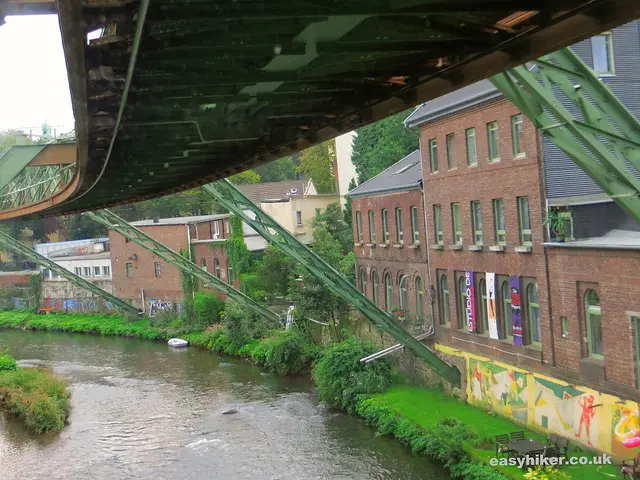
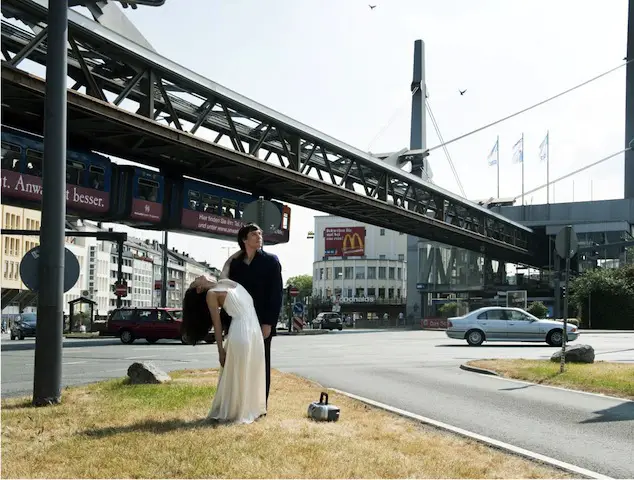
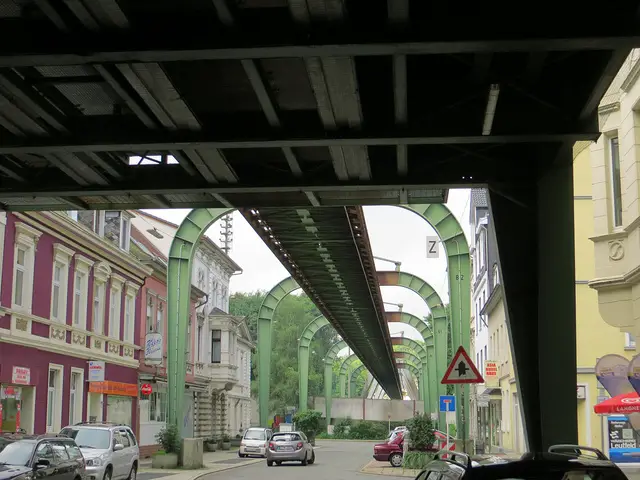

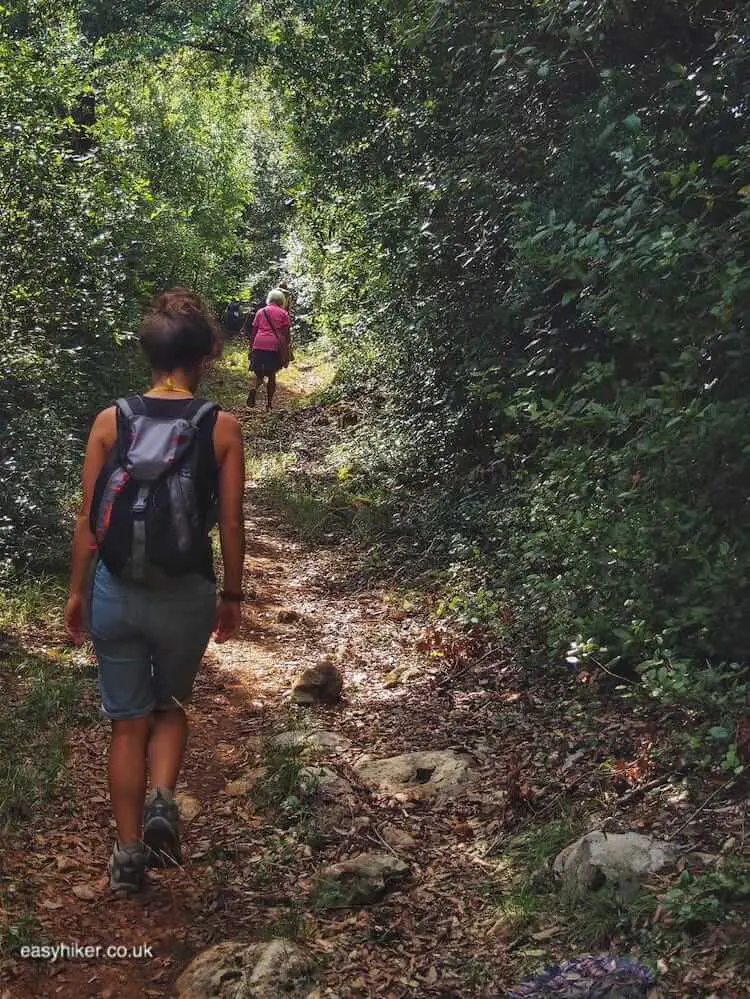

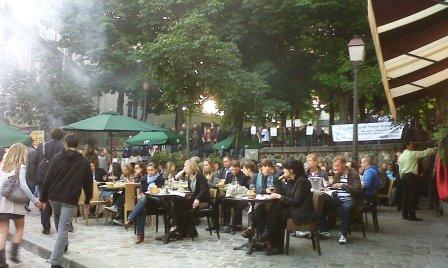
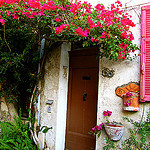
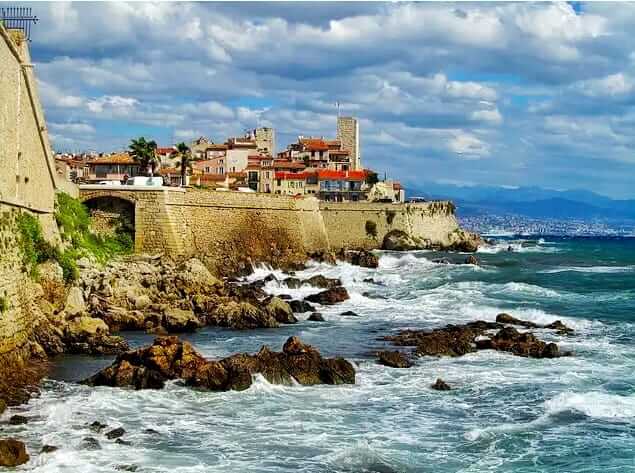
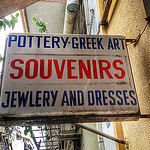
Wow, I would travel there just to ride the trains. So cool!
I’ve never seen anything like this, but I would love to go for a ride in one of these!
That suspension railway is beyond cool and awesome. I want to go one one too now. Loving the trivia information here.
These trains are totally cool — never saw them before. Would love to take that ride. I’ve never heard of any other suspension railways either. What a concept!
This is definitely something I’ve never seen before. What an unusual method of transportation and now of course I’d like to see the real thing. Thank you for sharing this.
You have no idea at all how nostalgic this made me! I did a school exchange to Solingen when I was 15, and went back to visit the family when I was 18, and we went to Wuppertal both times. The railway fascinated me. It’s so amazing to see it again. Thanks for the trip down memory lane!
You’re welcome, Thomas. And thanks for dropping by.
Thanks for all these information, Andreas. I learned something new from you! And thanks for dropping by, too.
You should descend on the station “Wuppertal HBF” (=main station) to get into the major city centre. If you descend on the station “Alter Markt”, you will just go into the centre of Barmen, which is like the smaller city centre. The excistence of two city centres is due to the fusion of the cities major Barmen and Elberfeld (and some smaller cities) to today’s Wuppertal in 1929… By the way, another famous thing from Wuppertal: Aspirin! The company Bayer was founded here and its huge industrial areas can be easily seen from the Schwebebahn :)
Great photos. Thanks for this story about my wonderful hometown. Greetings from Wuppertal, Northrhine-Westfalia.
Being the train geek that I am, I already knew about this place (and I believe you’re right – it is the only one of its kind), but hadn’t really seen any pictures. Definitely have to go now!
Andrew, you should not miss trying this one while you’re still in Germany.
Never seen anything like this before, but want to try one now!!
Very cool. I only know the name of the town and had no clue they had such a cool train system. Thanks for the heads up. Hope it stays in my head enough to rememebr to go see it.
Wow, that is so great! I haven’t been in one but I do like to try out weird and unique transportation so hopefully I’ll get the chance to get there someday :)
Interesting.
So cool…